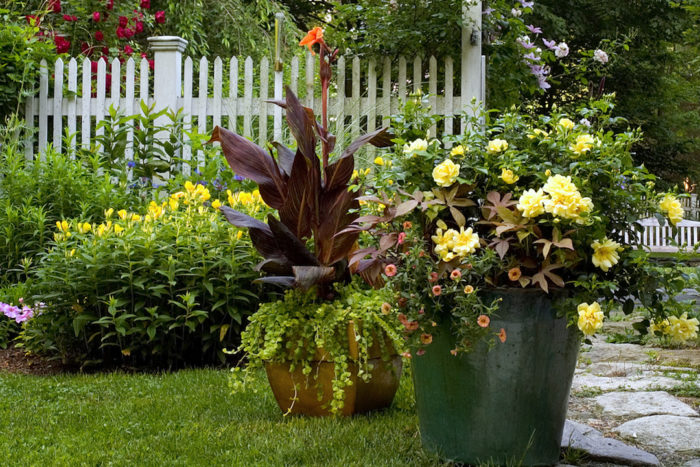
So many of us love to look at all the beautiful colors, textures and shapes of plants in the garden center, but we have a hard time visualizing combinations. Don’t despair! Here are 10 tips for creating your own Wow-Worthy Containers.
1) Think “Thriller-Spiller-Filler”
This tried-and-true design trick is a great way to make sure your containers have the right scale, proportions and mix of shapes and textures. Start with a “thriller” – a tall plant in the center or center-back of the composition, add a “filler” – a mid-level plant that softens and complements the thriller, and finally, a “spiller” – a tumbler or trailer that spills over the edge of the pot.
For your “thriller,” try an upright focal point plant such as tall tropical and large-leaved plants like Tropicanna® cannas. Tropicannas are ideal for a number of reasons. If you miss a watering cycle, the plants bounce back. On the other hand, they can stand wet feet to the point of being used as water garden plants. The colorful foliage means season-long interest and the tropical blooms are certainly a bonus. They come in 3 different leaf colors, and with that, you can design almost any container.
For your “filler” use plants that are bushy or fuller. ‘Profusion’ zinnias, coleus or caladiums work nicely, or depending on the size of you container, even a Flower Carpet® rose. The “spiller” is any plant that will trail or cascade over the edge of the pot, like petunias, calibrachoa or creeping Jenny.
2. Echo Colors
This means looking for hues in one plant that can be reflected in another plant – either used in the same container or in a group of containers as seen with the Festival™ ‘Burgundy’ cordyline below. This cordyline is extremely drought-tolerant and pest-resistant and its basal branching structure also creates a gently fountaining effect.
3. Get a little monochromatic mojo going
Monochromatic color schemes are a great way to design containers, keeping one element – color – the same while incorporating different textures and shapes. Below, the easy-care yellow Flower Carpet® roses echo the yellow variegation of the cascading Hakonechloa macra ‘Aureola’ and the dainty lady’s mantle flowers. Likewise, Flower Carpet Coral combined with burgundy heuchera and sedge creates a calming monochromatic display.
4. Cool Contrasts
Just as similar materials can work together to create a pleasing container design, so can contrasting or opposing elements. Dark/light or complementary color schemes can amplify the brightness or hue of a specific plant by deliberately setting it alongside its opposite. And by juxtaposing contrasting shapes or color, the overall effect is one of balance as in the example below, featuring Festival ‘Burgundy’ cordyline and white lobelia.
5. Choose proven, easy-care plants
Succulents require little care, but the same can be said for showy, tropical plants like mandevilla, Tropicanna® canna and agapanthus such as Blue Storm™ (shown below– stunning all by itself). Even roses can be used in containers (second photo, below), especially if they’re disease-resistant and drought- and heat-tolerant. Flower Carpet® roses, for instance, look fabulous trailing over the sides of containers and are just lovely on their own too.
6. Contrast textures
Fine or delicate foliage contrasts nicely with straight, narrow stalks and broad tropical leaves. Similarly, long, skinny leaves or strappy, arch-type forms look great when paired with full, rounded or oval shapes.

7. Same needs, same pot
When purchasing plants, make certain the plant includes a label the specifies its light and moisture needs. Know the difference between full sun, partial shade and full shade, and place plants with like cultural requirements in one pot. The same is true of water requirements. This ensures healthy plants and cuts down on your maintenance routine.
8. Size matters
Some plants, like Tropicanna cannas, will grow up to four to five feet high by the end of the season and enlarge their root size so much, they break through the pot. Make certain all the plants you put in one pot will remain in scale and that your pot size is one-half to one-third the size of the tallest plant when mature. If your mature plants are expected to grow to 3 feet X 3 feet wide, for instance, your planter should be no smaller than 1 to 1 ½ X 1 feet wide and 1 to 1 ½ feet high.
9. Create eco-friendly, mixed ornamental-edible containers
If your space is limited, consider mixing ornamentals with edibles in one container. However, make certain that you’re using an organic soil mix and ornamental plants that don’t require any chemicals to keep them thriving. With their bred-in disease resistance, Flower Carpet roses are ideal in mixed containers. Add a few parsley or rosemary plants as filler and add a border of oregano or white-flowered bacopa and you’ll have a lovely season-long container that’s both beautiful and useful.
10. Plan ahead for fall
It’s not too early to plan for fall color! The catch is that for a big fall display you have to plant the “bones” during the spring and early summer. Focal point foliage should always be the centerpiece of a long-lasting container garden.
For a real “wow” factor, start with Tropicanna® canna in the center or center back of a large (at least 18-24-inch-diameter) container. With its variegated leaves, it’s the ideal companion for bright summer annuals, and then later in the season, to integrate the rich colors of fall. For spring/summer fillers and spillers, try marigolds, pink lantana and orange calibrachoa, and bright red supertunias. As those get ragged, replace them with pansies, ornamental kale, decorative peppers, mums and colorful grasses. If your local availability of fall plants is limited, add a few decorative gourds to the container for added color.

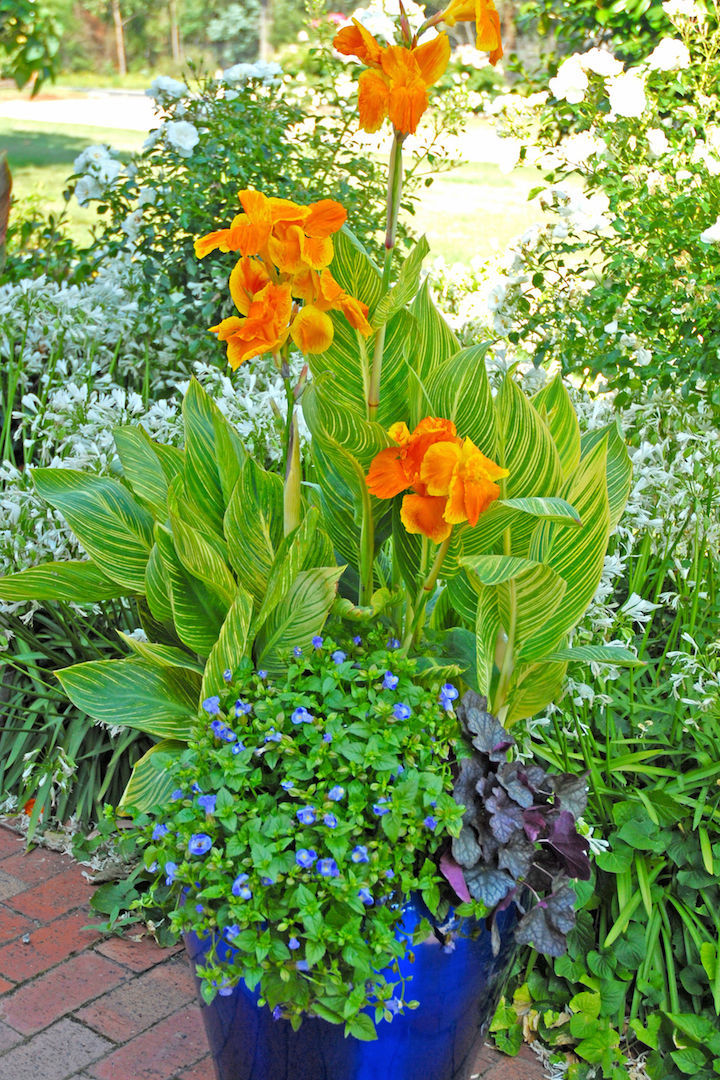
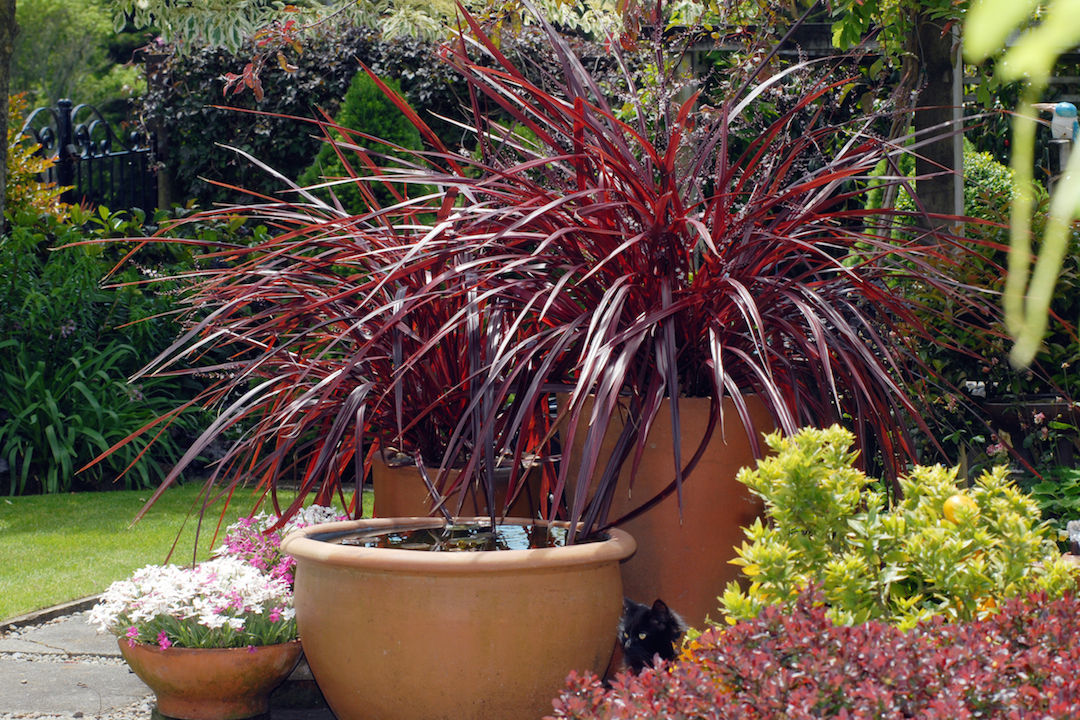

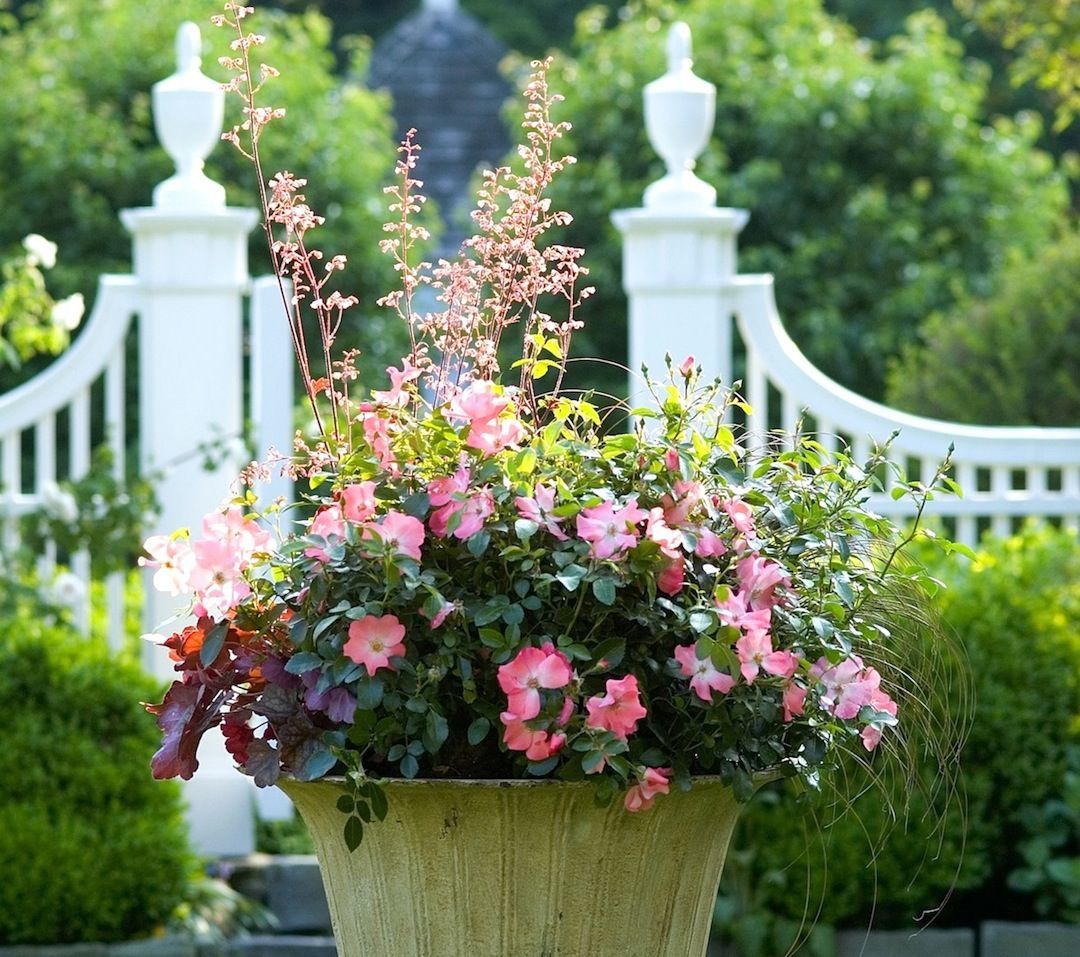
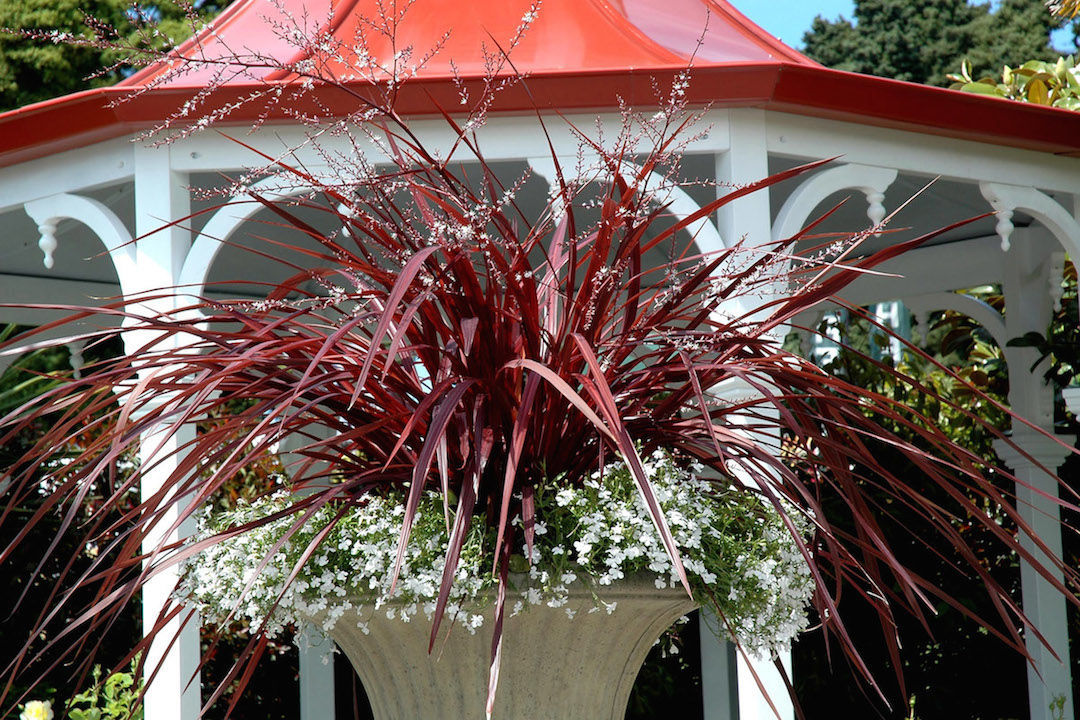
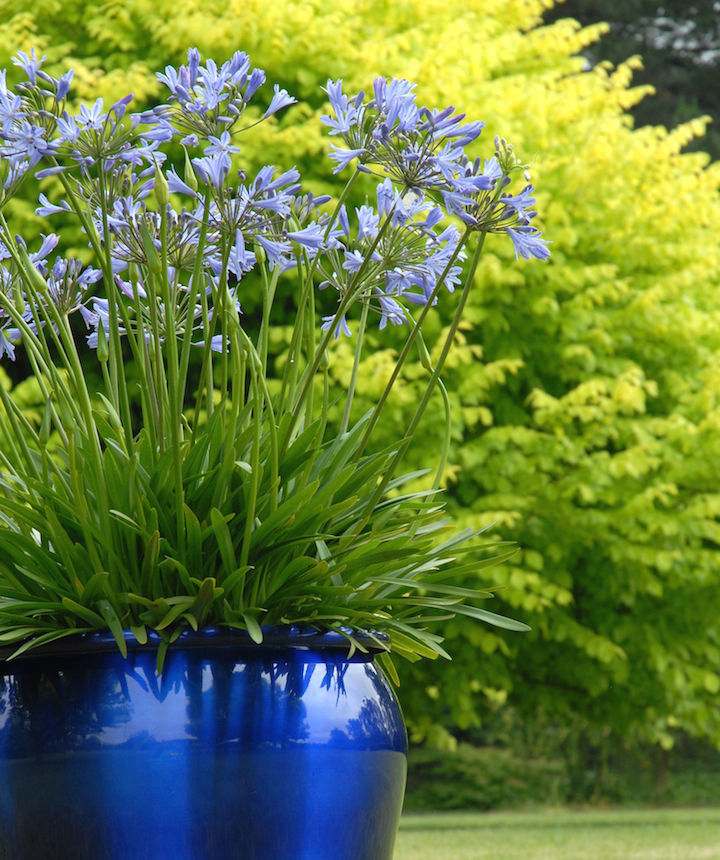
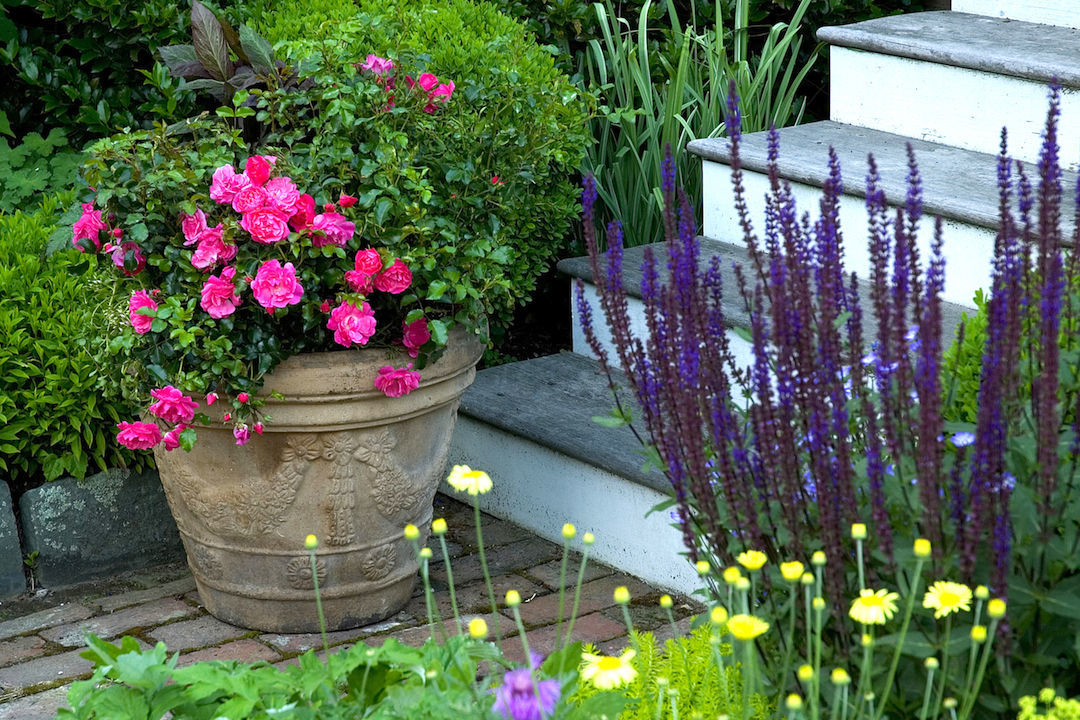
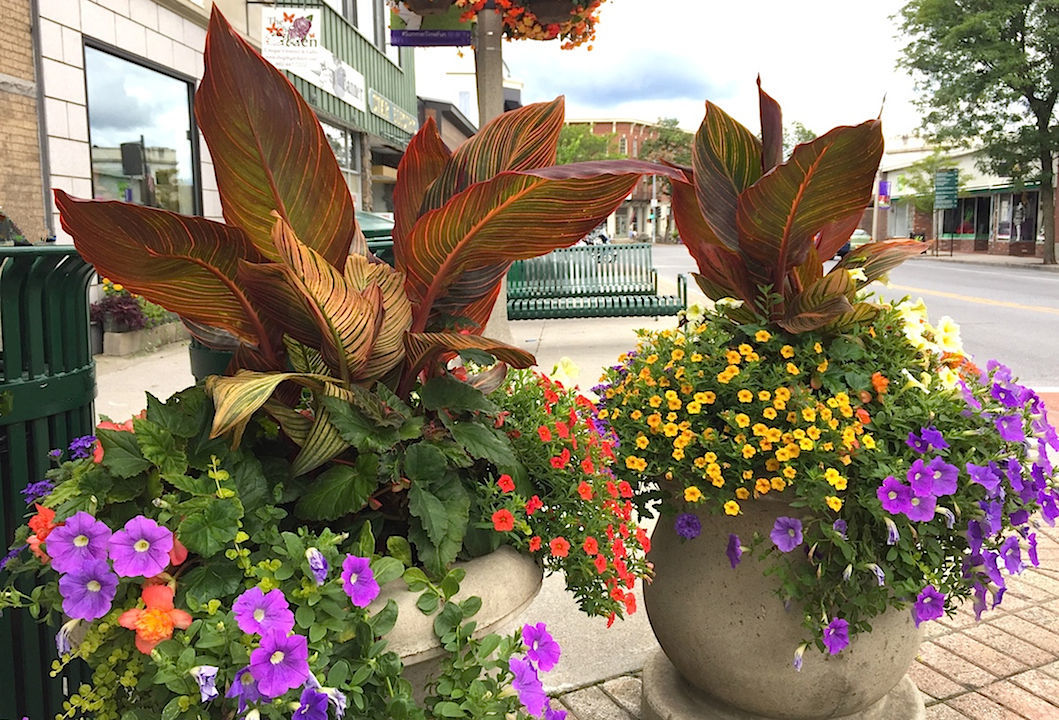
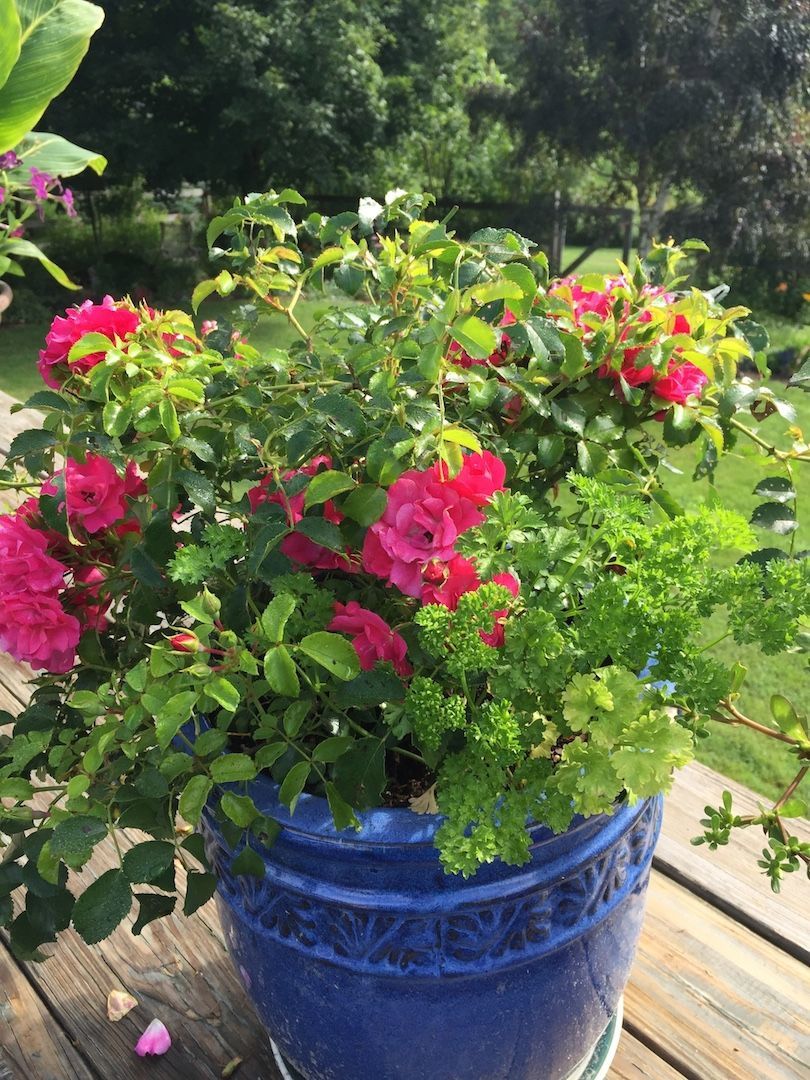
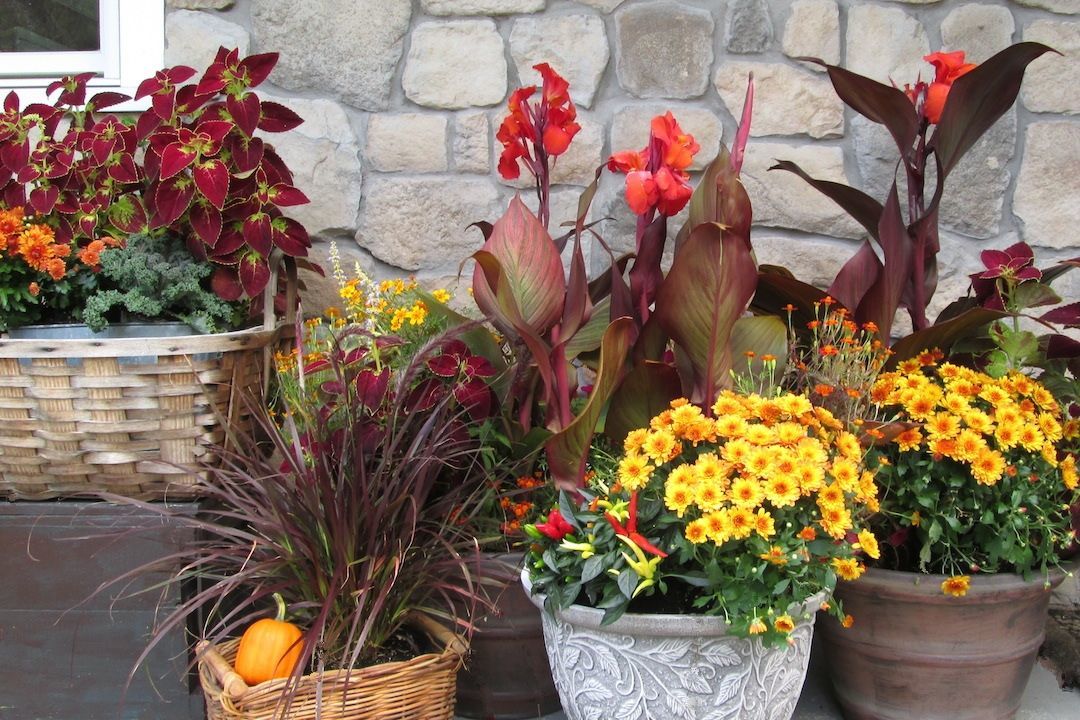



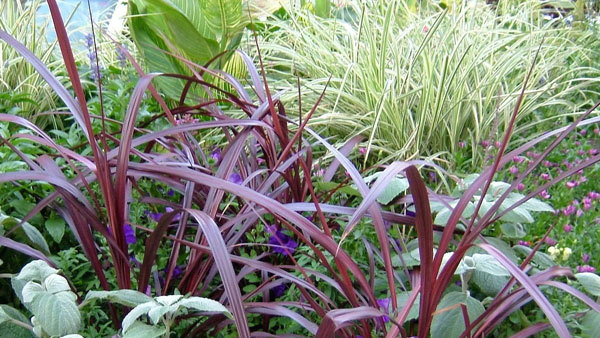












Comments
I never considered Cannas in a container! Something I might try...so much easier to overwinter them in non hardy zones.
Yeah! It's Beautiful!
So beautiful!
Log in or create an account to post a comment.
Sign up Log in